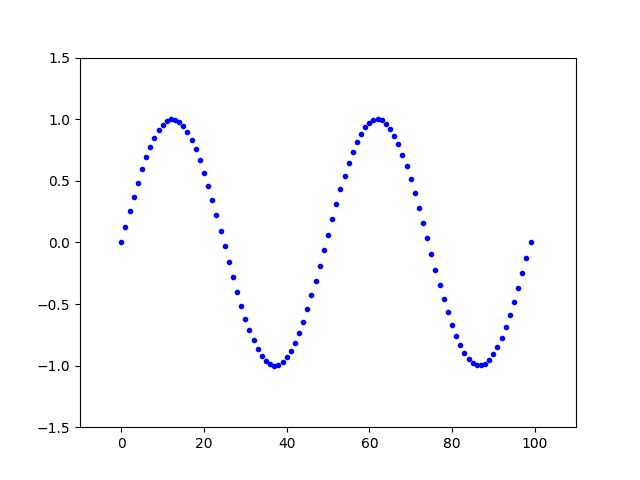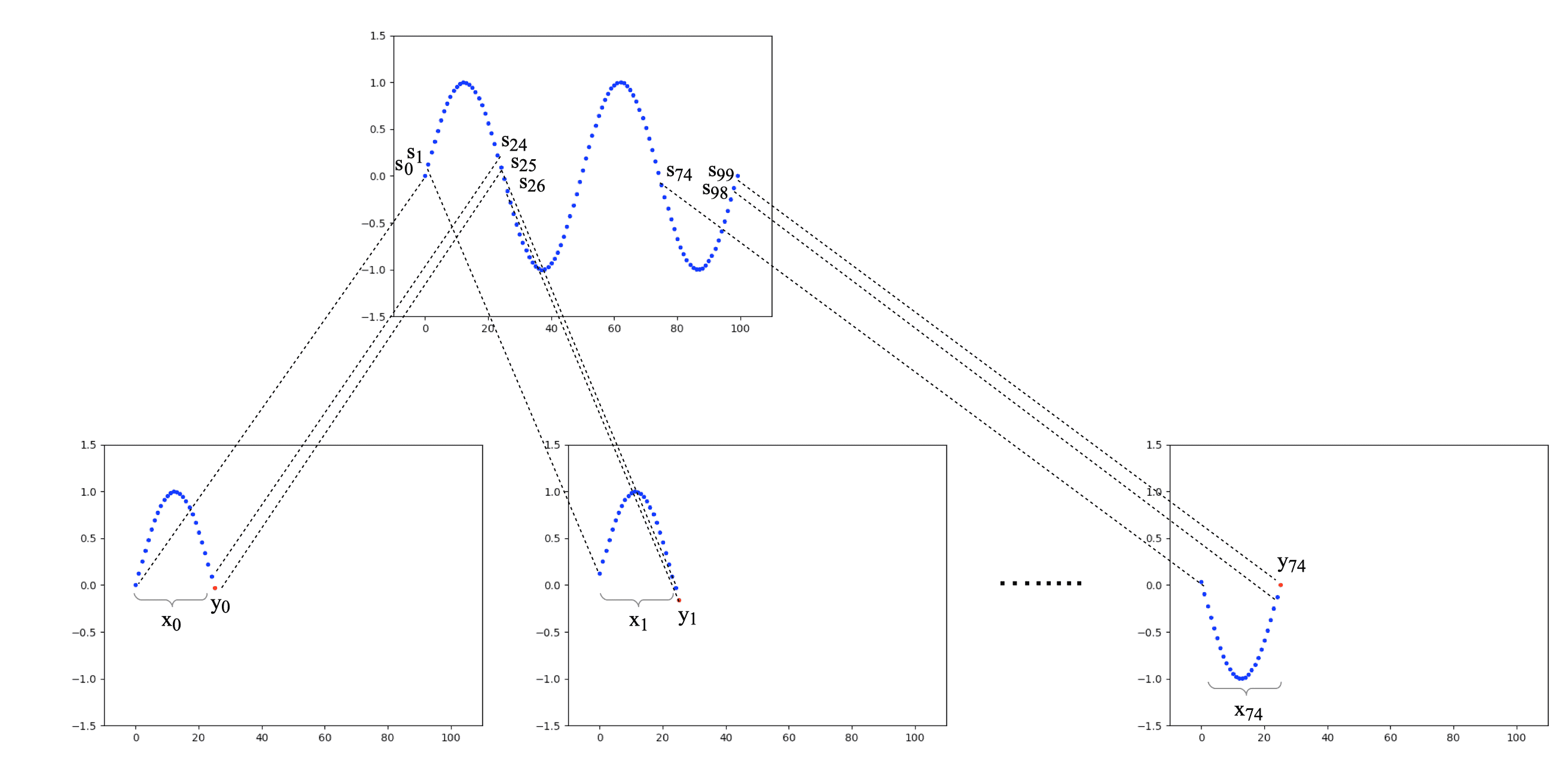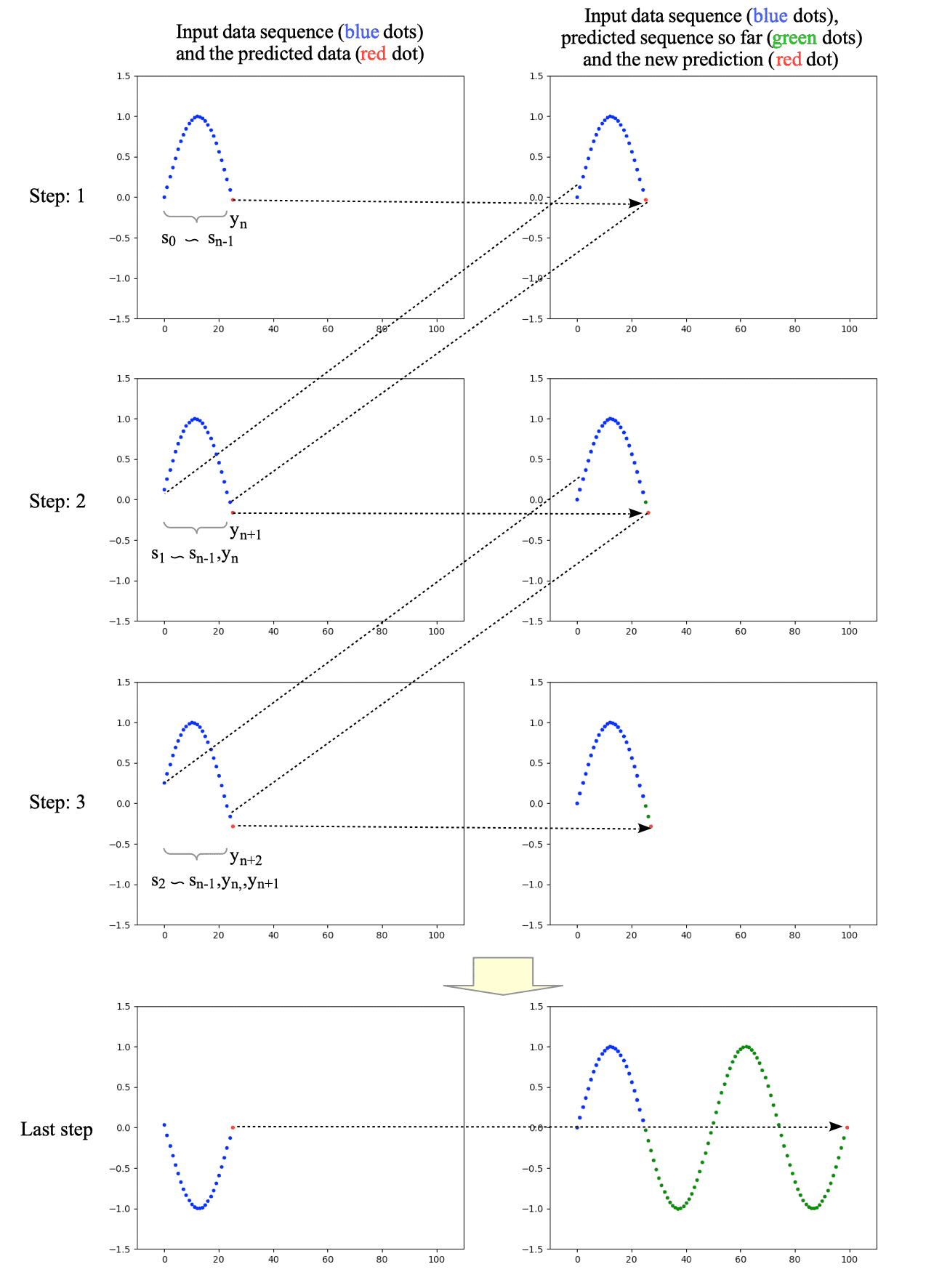6. Dataset and Task
In this part, we tackle sine wave prediction, a common task in regression problems.
6.1. Dataset
6.2. Prediction Task
6.1. Dataset
DataSet.py module provides two functions: create_wave() and dataset().
6.1.1. create_wave() function
The create_wave() function generates a sequence of data $S =$ {$s_{0},s_{1},\ldots,s_{N-1}$} representing a sine wave with amplitude 1 and 2 cycles, specified by the number $N$. The default value of $N$ is $100$.
def create_wave(N=100, noise=0.05):
_x_range = np.linspace(0, 2 * 2 * np.pi, N)
return np.sin(_x_range) + noise * np.random.randn(len(_x_range))
6.1.2. dataset() function
The dataset() function creates a given data sequence $S$ and the value $n$ into a suitable dataset for training a regression model. It operates as follows:
- Creating the first training example:
- Extract the first n elements of $S$, from $s_{0}$ to $s_{n-1}$, as the input sequence $x_{0}$.
- Set the next element $s_{n}$ as the corresponding output label $y_{0}$.
- This creates the first training example, $(x_{0}, y_{0})$, aiming to predict $s_{n}$ based on the preceding $n$ points.
- Generating more training examples:
- Repeat for $j = 1$ to $N-n-1$:
- Extract a new input sequence $x_{j}$ from $s_{j}$ to $s_{j+n-1}$.
- Set the corresponding output label $y_{j}$.
- Repeat for $j = 1$ to $N-n-1$:
This dataset{$(x_{0},y_{0}),(x_{1},y_{1}),\ldots,(x_{N-n-1},y_{N-n-1}) $} can then be used to train a regression model to predict the next data point in the sequence.
def dataset(S, n=25):
n_sample = len(S) - n
x = np.zeros((n_sample, n, 1, 1))
y = np.zeros((n_sample, 1, 1))
for i in range(n_sample):
x[i, :, 0, 0] = S[i : i + n]
y[i, 0] = S[i + n]
return x, y
6.2. Prediction Task
To make predictions, we use a method called $k$-step-ahead prediction:
- Predict $y_{n}$ using $s_0$ to $s_{n-1}$ in the data sequence $S$ (i.e., the data sequence $x_{0}$).
- Predict $y_{n+1}$ using the data sequence $s_{1}$ to $s_{n-1}$ and the previous predicted value $y_{n}$.
- Similarly, for $j = n+2$ to $N-n-1$, we take the predicted value $y_{j}$ and continue prediction.
